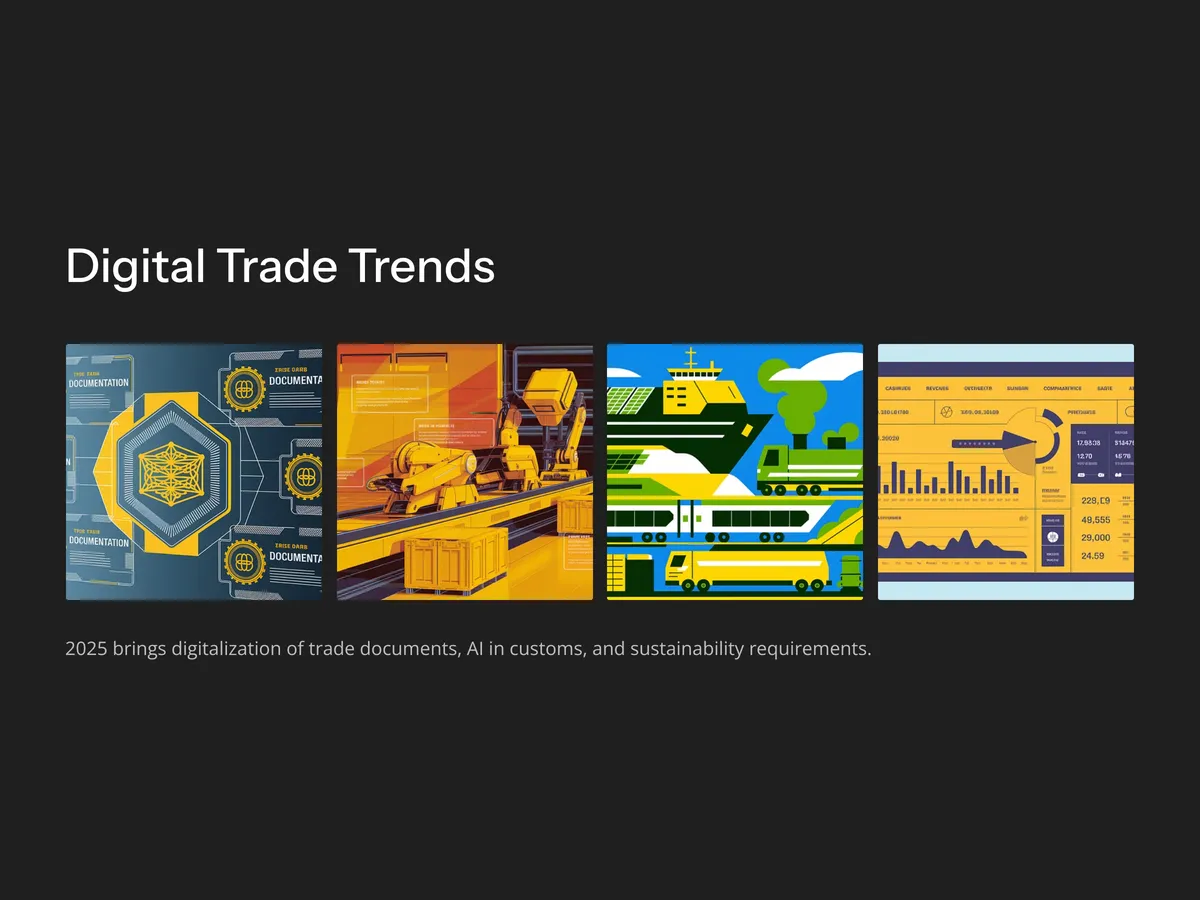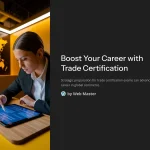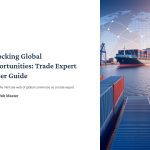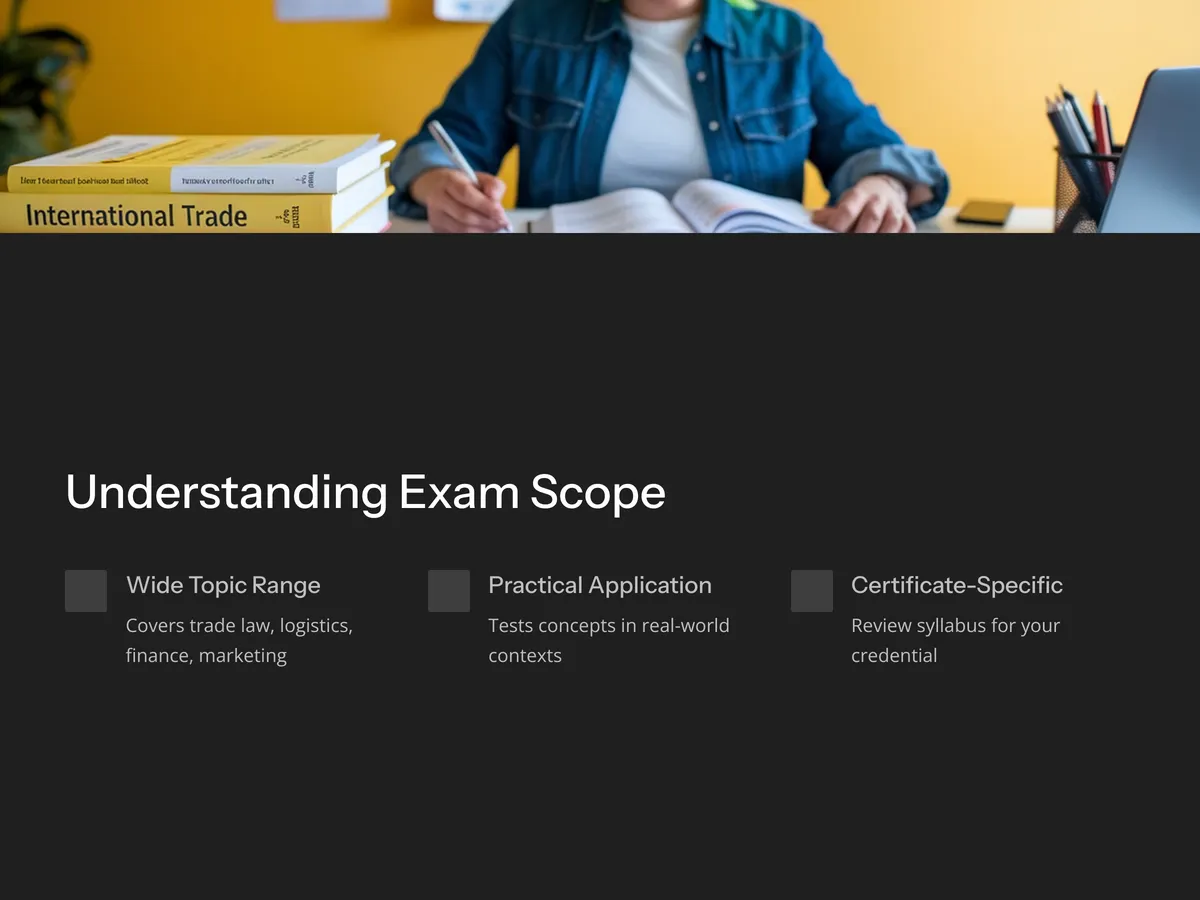 Preparing for trade certification exams is more than just memorizing terms—it’s about strategically understanding global commerce, policies, and practical applications. Recently, with the growing importance of international trade relations and increased demand for trade professionals, acquiring a trade-related certificate such as the Certified International Trade Professional (CITP) or International Trade Specialist is becoming a powerful credential. Especially in 2025, the digitalization of trade documentation and the rise of AI in customs procedures are shaping a new era. This means written exams now not only test traditional knowledge but also include new trends in digital trade, sustainability, and compliance. In this post, you’ll discover how to navigate the written exam, where to focus your study, and how to increase your chances of passing on the first try. This is your roadmap to a more lucrative and respected career in global trade.
Preparing for trade certification exams is more than just memorizing terms—it’s about strategically understanding global commerce, policies, and practical applications. Recently, with the growing importance of international trade relations and increased demand for trade professionals, acquiring a trade-related certificate such as the Certified International Trade Professional (CITP) or International Trade Specialist is becoming a powerful credential. Especially in 2025, the digitalization of trade documentation and the rise of AI in customs procedures are shaping a new era. This means written exams now not only test traditional knowledge but also include new trends in digital trade, sustainability, and compliance. In this post, you’ll discover how to navigate the written exam, where to focus your study, and how to increase your chances of passing on the first try. This is your roadmap to a more lucrative and respected career in global trade.
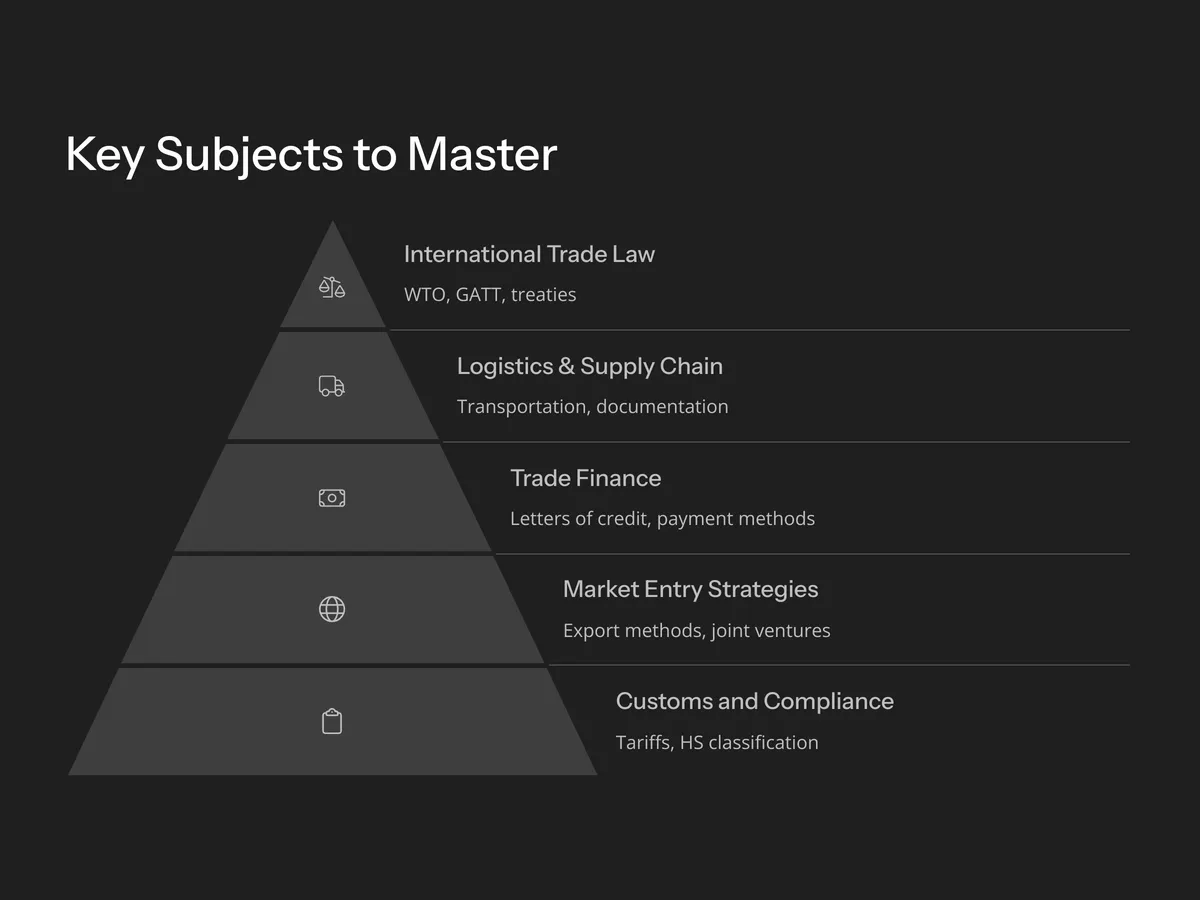
Understanding the Scope of Trade Certification Exams
Trade certification exams typically cover a wide range of topics—from international trade law to logistics, finance, and marketing. The written portion is designed to assess your knowledge of fundamental trade concepts and your ability to apply them in practical contexts. You’ll encounter questions on Incoterms, customs procedures, trade compliance, foreign exchange, and international contracts.
To prepare effectively, start by reviewing the specific syllabus of the certificate you’re pursuing. Each credential has unique components. For instance, the CITP covers global business environment, international marketing, and global trade finance. Focus your study efforts on high-weight sections and understand the rationale behind each regulation or process. Memorization alone won’t help; case-based questions are common and require you to think critically.
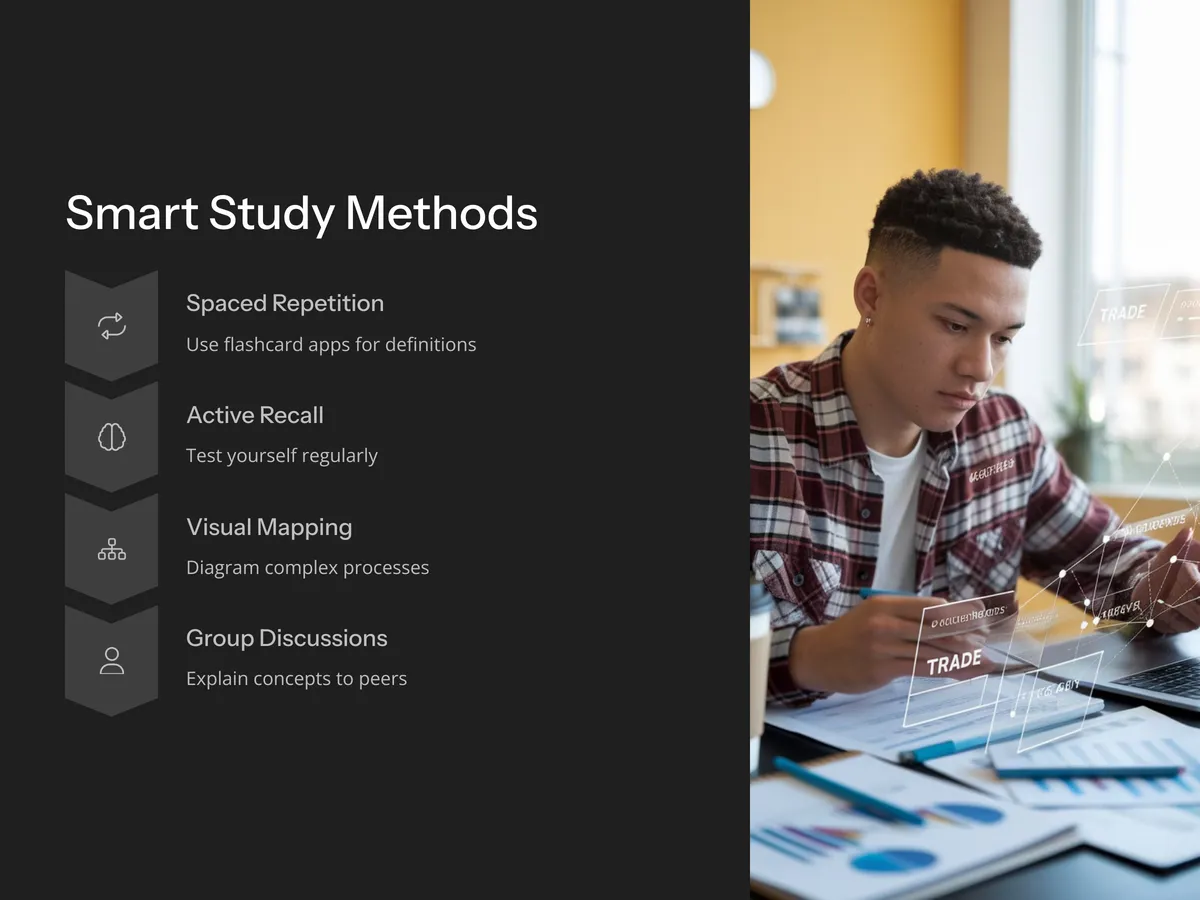
Key Subjects You Must Master for the Exam
To perform well in the written test, prioritize mastering key areas. These typically include:
- International Trade Law: Covers conventions, treaties, and legal frameworks like the WTO, GATT, and regional trade agreements.
- Logistics & Supply Chain Management: Focuses on transportation modes, documentation, warehousing, and risk management.
- Trade Finance: Includes letters of credit, bills of lading, foreign exchange, and payment methods.
- Market Entry Strategies: Understanding direct vs. indirect exporting, joint ventures, and licensing.
- Customs and Compliance: Knowledge of tariffs, duties, and classifications under the Harmonized System (HS).
Utilize official study guides and online platforms that offer mock exams. Supplement with current trade news and trends to understand how theoretical knowledge applies in real scenarios. Don’t underestimate the power of practical case studies—they frequently appear in exams.
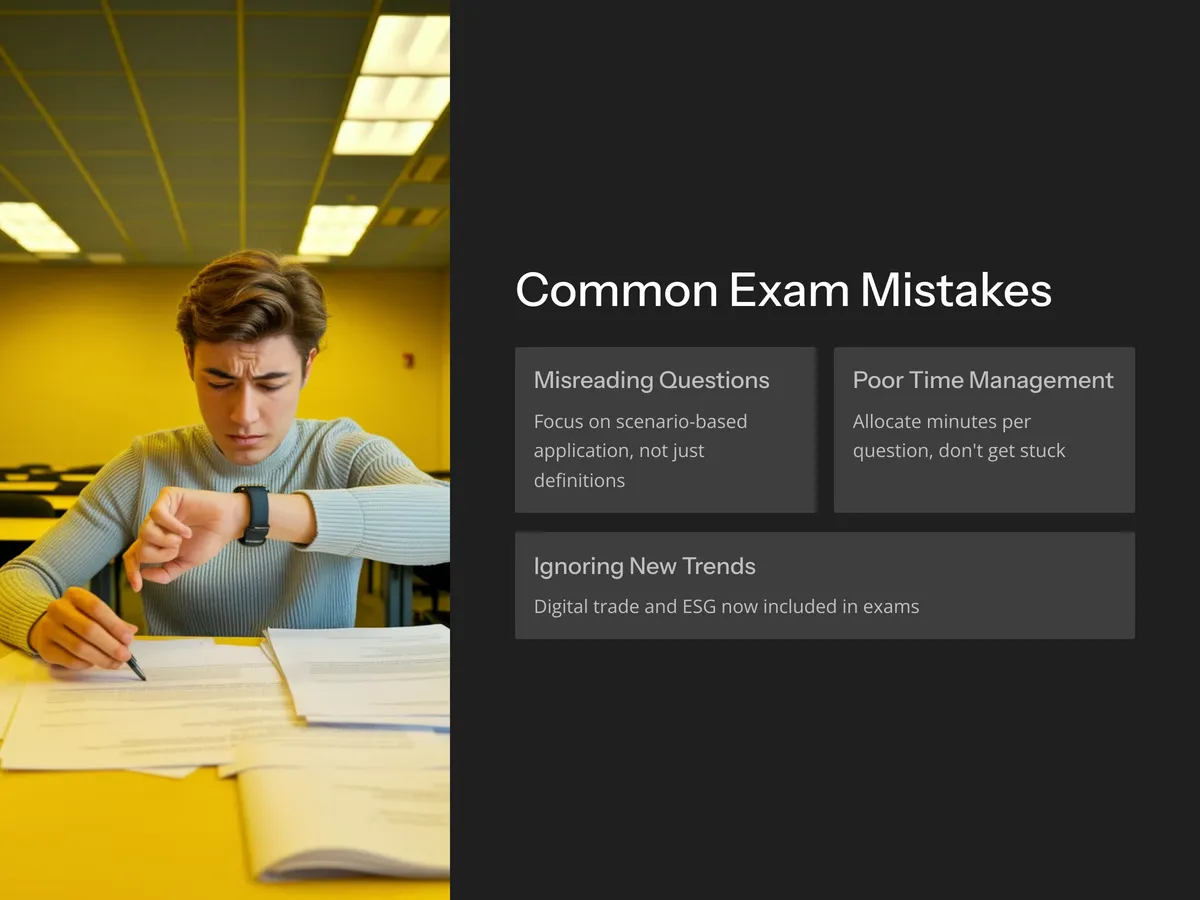
Smart Study Tips to Save Time and Boost Retention
Effective preparation doesn’t require cramming. Instead, apply smart study methods:
- Spaced Repetition: Use flashcard apps like Anki for definitions and compliance rules.
- Active Recall: Test yourself regularly instead of passively reading notes.
- Visual Mapping: Diagram complex processes like export documentation flow or logistics chains.
- Practice Case Studies: Analyze real-world trade disputes or transactions.
- Group Discussions: Explaining concepts to peers improves retention.
Time management is key. Break your study schedule into small, manageable chunks. Focus on one topic per session, and avoid multitasking. Track progress weekly and adjust your plan based on mock test results.
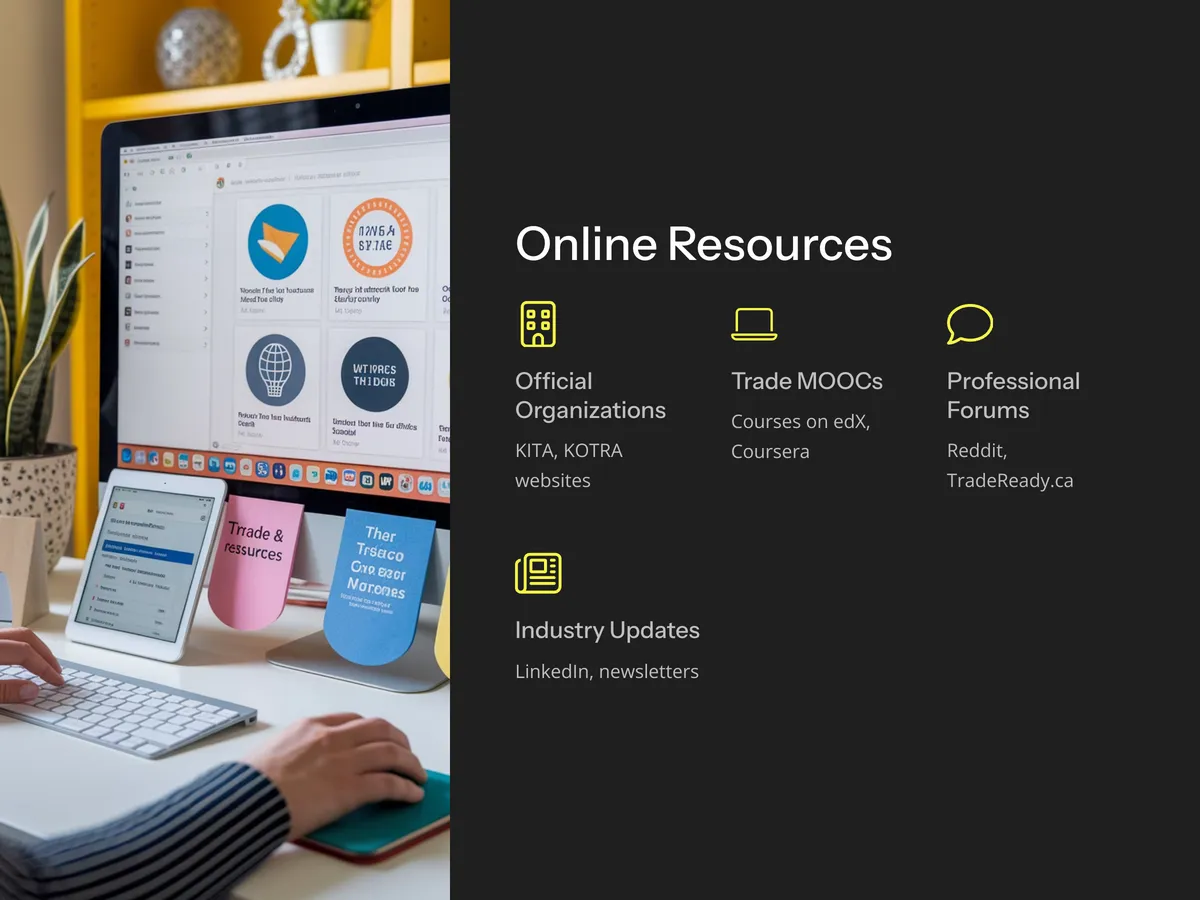
Common Mistakes to Avoid During the Written Exam
Even well-prepared candidates can falter due to test-day mistakes. Watch out for the following:
- Ignoring the Question’s Intent: Many questions are scenario-based and require applied knowledge, not definitions.
- Overwriting Answers: Be concise and focus on the key points.
- Skipping Time Management: Allocate time wisely to all questions. Don’t get stuck on one.
- Guessing Without Logic: If unsure, eliminate wrong choices first to improve odds.
- Neglecting Latest Trade Developments: Some exams now include digital trade and ESG trends.
To minimize these risks, practice under timed conditions. Review your mock exam errors in detail to understand your weak points. Read the instructions carefully—some exams have negative marking.

Leveraging Online Resources and Official Tools
Many candidates overlook the wealth of free and paid resources available online. Here are a few key platforms:
- KITA and KOTRA websites: Offer trade insights, reports, and sample questions.
- Trade MOOCs: Courses from edX, Coursera or FutureLearn in trade logistics, law, or finance.
- Professional Forums: Engage with community Q&A platforms like Reddit or TradeReady.ca.
- Official Certification Portals: Always check for updated exam formats, guidelines, and downloadable syllabi.
Additionally, follow trade organizations on LinkedIn or subscribe to newsletters. These often provide the latest updates, news, and exam tips that can appear on the test.
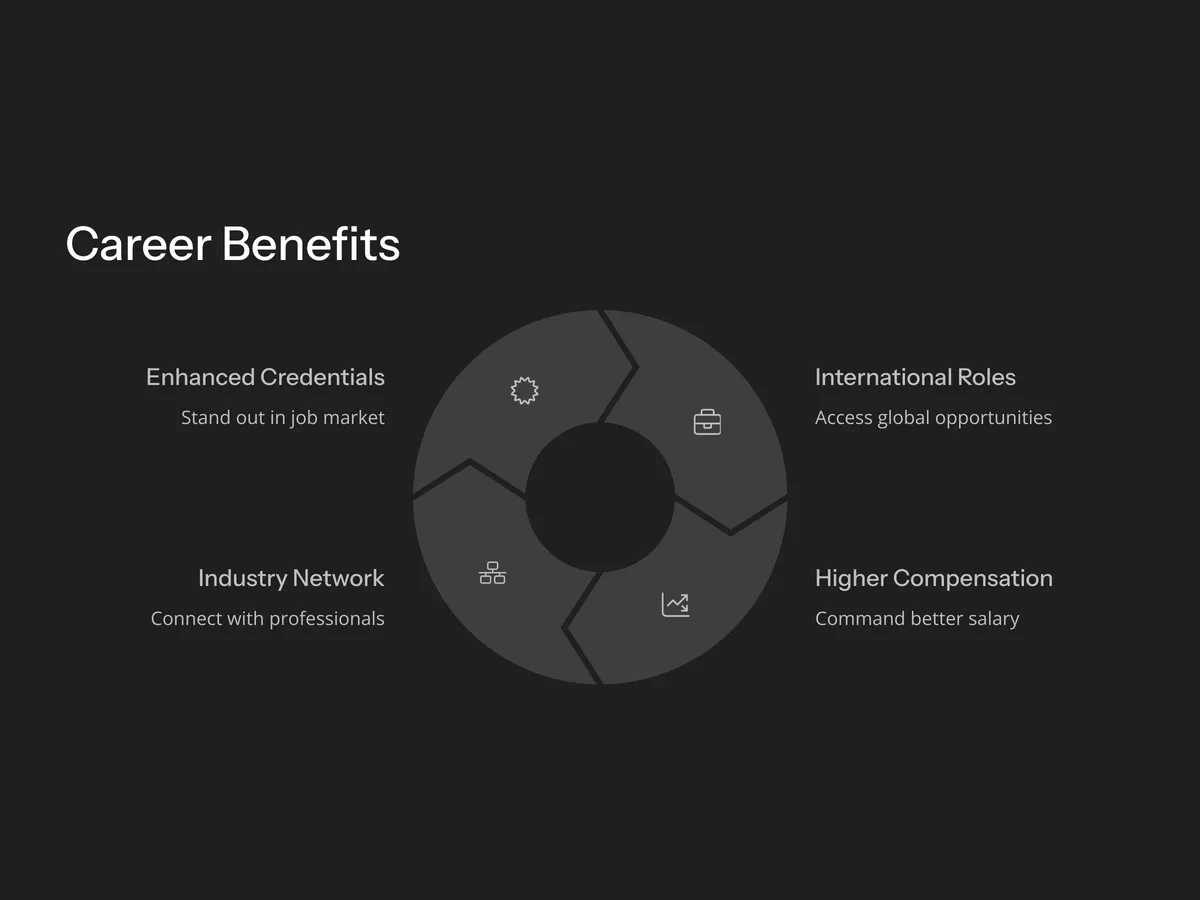
Final Checklist Before Taking the Exam
As the exam date approaches, your preparation should shift from learning to reviewing:
- Complete Full-Length Mock Tests: Simulate real exam conditions at least twice.
- Create Summary Sheets: One-pagers for each major topic help in quick revisions.
- Sleep and Nutrition: Don’t neglect your health—brain function depends on rest.
- Technical Readiness: If the test is online, ensure stable internet and familiarity with the platform.
- Documentation: Carry valid IDs, exam confirmation printouts, and stationery if allowed.
Stay caltrade certification examm and confident. Certification exams are meant to be challenging but not impossible. Passing it not only boosts your credentials but opens doors to international roles and higher-paying positions in trade.
*Capturing unauthorized images is prohibited*

